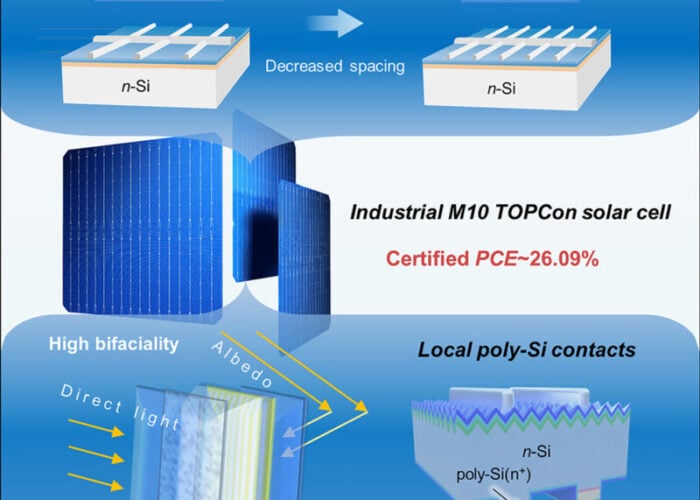centrotherm photovoltaics is offering an upgrade package for its centaurus technology, which combines a selective emitter with a dielectric passivated backside. The technology implementation is said to already be combined with fine line printing, reducing paste consumption of the front side silver paste by more than 20%. The achieved conversion efficiencies on 156x156mm² monocrystalline (cz) wafers have already reached the 20% level. Currently, centrotherm said it has more than 50MW of centaurus technology being ramped into volume production.
Problem
Try Premium for just $1
- Full premium access for the first month at only $1
- Converts to an annual rate after 30 days unless cancelled
- Cancel anytime during the trial period
Premium Benefits
- Expert industry analysis and interviews
- Digital access to PV Tech Power journal
- Exclusive event discounts
Or get the full Premium subscription right away
Or continue reading this article for free
The performance of present standard industrial solar cells with extensive screen printed Al-BSF backside is limited by both rear surface recombination velocity and low internal reflection of the Al-backside. Outweighing these limitations by backside passivation concepts is generally associated with a high degree of risk and effort caused by new process and material developments.
Solution
centrotherm has developed a solar cell rear side technology with local Al-BSF in combination with a dielectric reflector. The reduced surface recombination velocity increases the Voc of more than 10 mV. The improvement of the internal light reflection for long wavelengths leads to a gain in Jsc of about 1.5 mA/cm². Both effects are claimed to lead to an overall efficiency improvement of about 1% (absolute), allowing average production efficiencies of more than 19.5%. The advantage of this technology, which is already in ramp-up status, is its availability for mass production at the same cost level as the standard process. Compared to other passivated backside concepts, it is based on well proven processes and materials, allowing a fast and easy implementation into running production lines, according to the company.
Applications
Upgrade package for centrotherm photovoltaics centaurus technology, which combines a selective emitter with a dielectric passivated backside.
Platform
In addition to the laser tool for selective emitter, three additional tools are required: For the formation of the rear dielectric layer centrotherm uses its proven PEVCD system which has been improved to provide higher throughput, especially for rear passivation process. Existing PECVD systems can be upgraded to process the rear dielectric layers. A laser tool is required to ablate the local BSF fraction of the dielectric layer. This c.LAS centaurus laser tool is based on the c.LAS machine platform for the selective emitter formation which had been introduced in 2009. To achieve optimal efficiency, an additional wet chemical tool, c.SIDE centaurus, is needed to smooth the rear side for optimal reflection and passivation.
Availability
April 2012 onwards.






